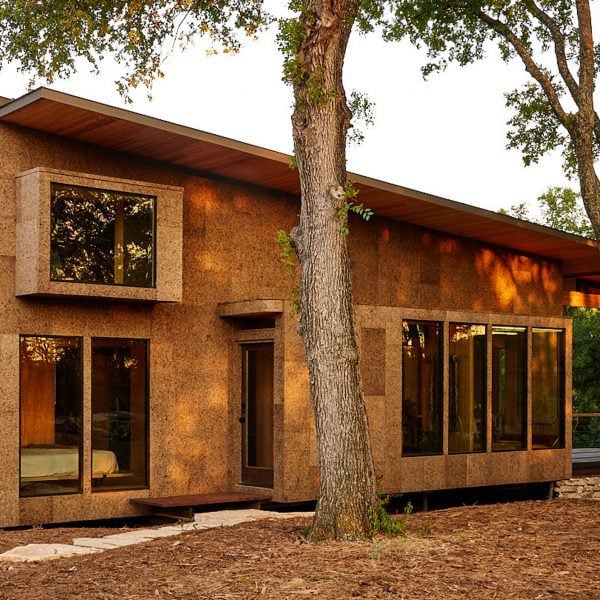Texas-based studio Moontower Design Build has constructed a “plant-based” cabin in Austin that features cross-laminated timber structural elements and a facade clad in cork.
Known as Cross Cabin, the accessory dwelling unit measures 1,000 square feet (93 square metres) in an 8,000 square foot (743-square metre) sloping yard that offers views of the horizon through the tree canopy.
Moontower Design Build completed the cabin in 2023 as a direct response to the AIA Architecture & Design Materials Pledge to centre design on the holistic impact of a building.
Motivated by author Michael Pollan’s book Food Rules – which advocates for eating real food in moderation with an emphasis on plants – Moontower Design Build prioritised materials that were not heavily processed or synthesized and are mostly plant-based.
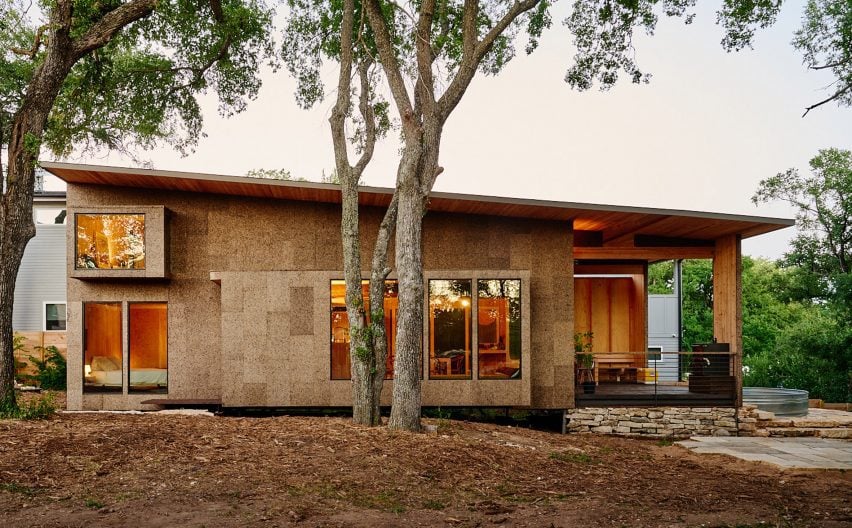
The team curated a material palette that created a compelling architectural experience, completed in 2023.
“These natural materials like wood and cork are repeatedly presented throughout the home in ways that are intended to provoke an unconventional sensory engagement with building materials,” studio co-founder Greg Esparza told Dezeen.
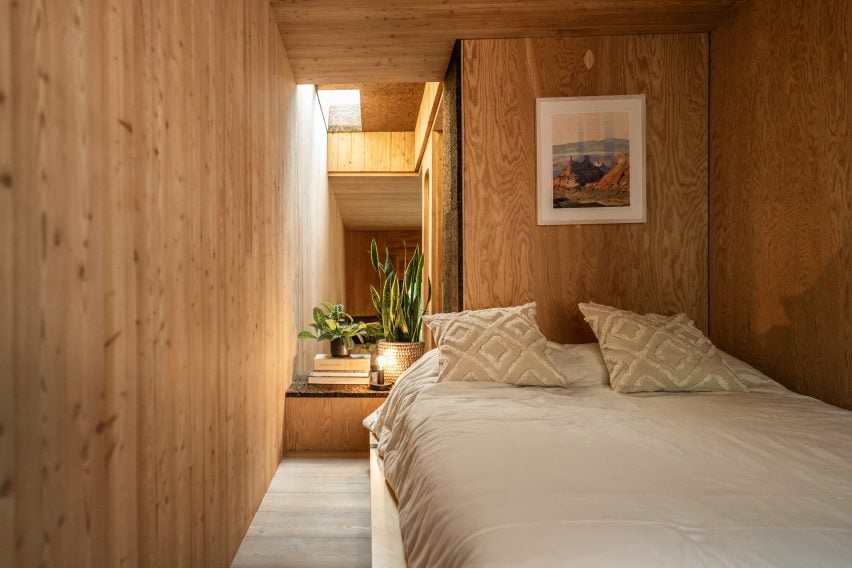
The cabin is composed of an elevated cross-laminated timber box “blanketed with plant-based insulation like cork, hemp and wood fiber.”
Seen through the screen of surrounding trees, the rectangular, two-storey cabin’s facade resembles tree bark, with fluctuating tones of silver, amber, brown and black cork cladding that will intentionally weather over time.
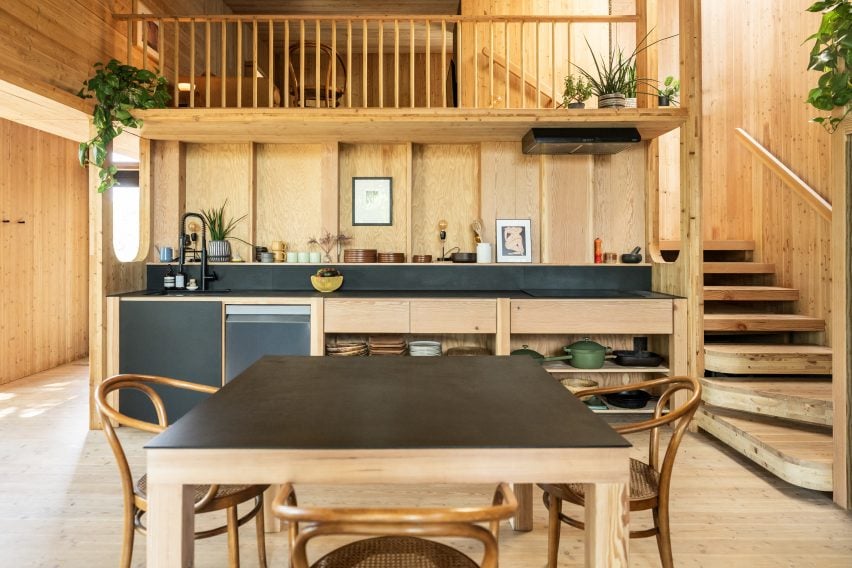
The box has a single-sloped roof that stretches out to shade protruding windows, nooks and a large porch.
The cork-clad exterior transitions to a wood-focussed interior with cross-laminated timber, solid-sawn lumber, plywood and thermally treated Larch floor.
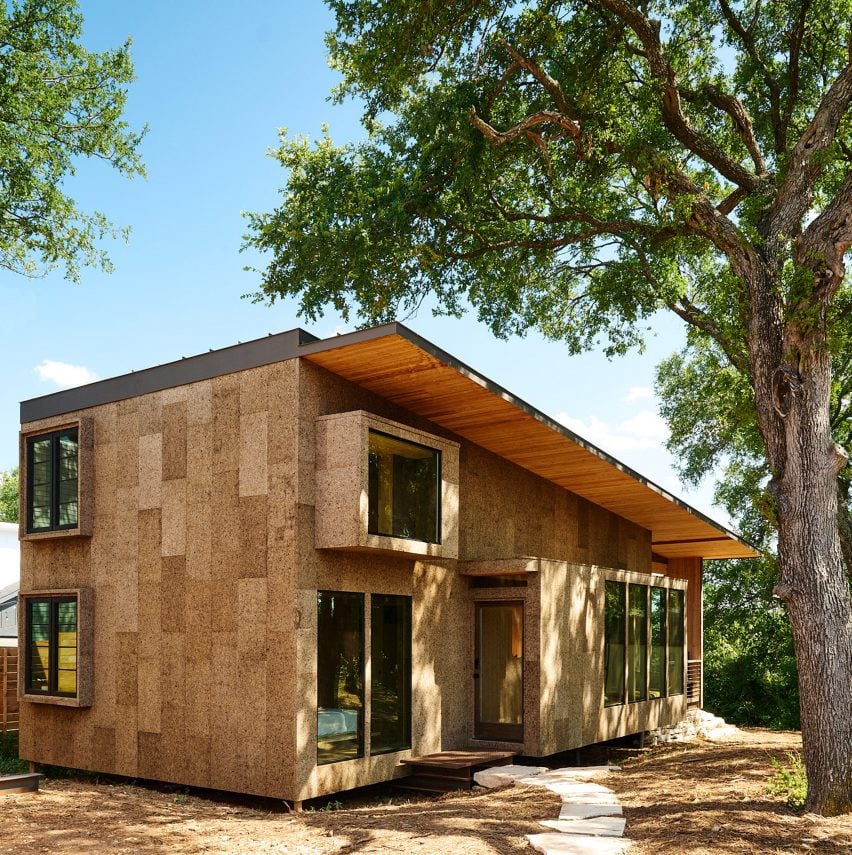
The different wood finishes were either left raw or finished with linseed oil. Additionally, the interiors feature expanded cork – 100 per cent cork bark – and a laminated recycled paper called Richlite.
The plant-based palette challenged the team to find creative solutions for different spaces – like shower coverings – rather than rely on “default setting” materials like drywall, latex paint or tile in the house.
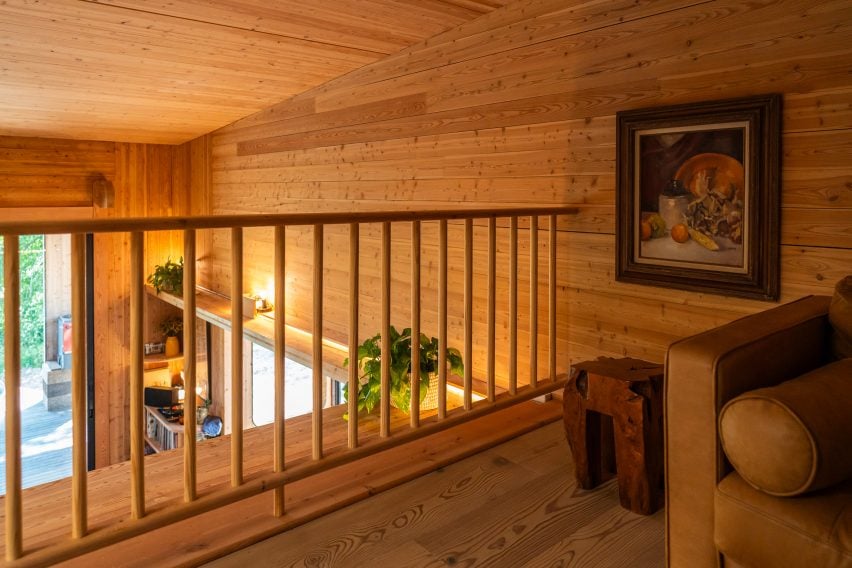
Esparza said the most common comment he receives is about how good the interior smells due to the lack of polyurethane sealants.
“Thinking about smell, touch, heat, and sound as critical design considerations along with sight helped to guide the design and reinforce the singular advantages of minimally processed, natural materials,” he said.
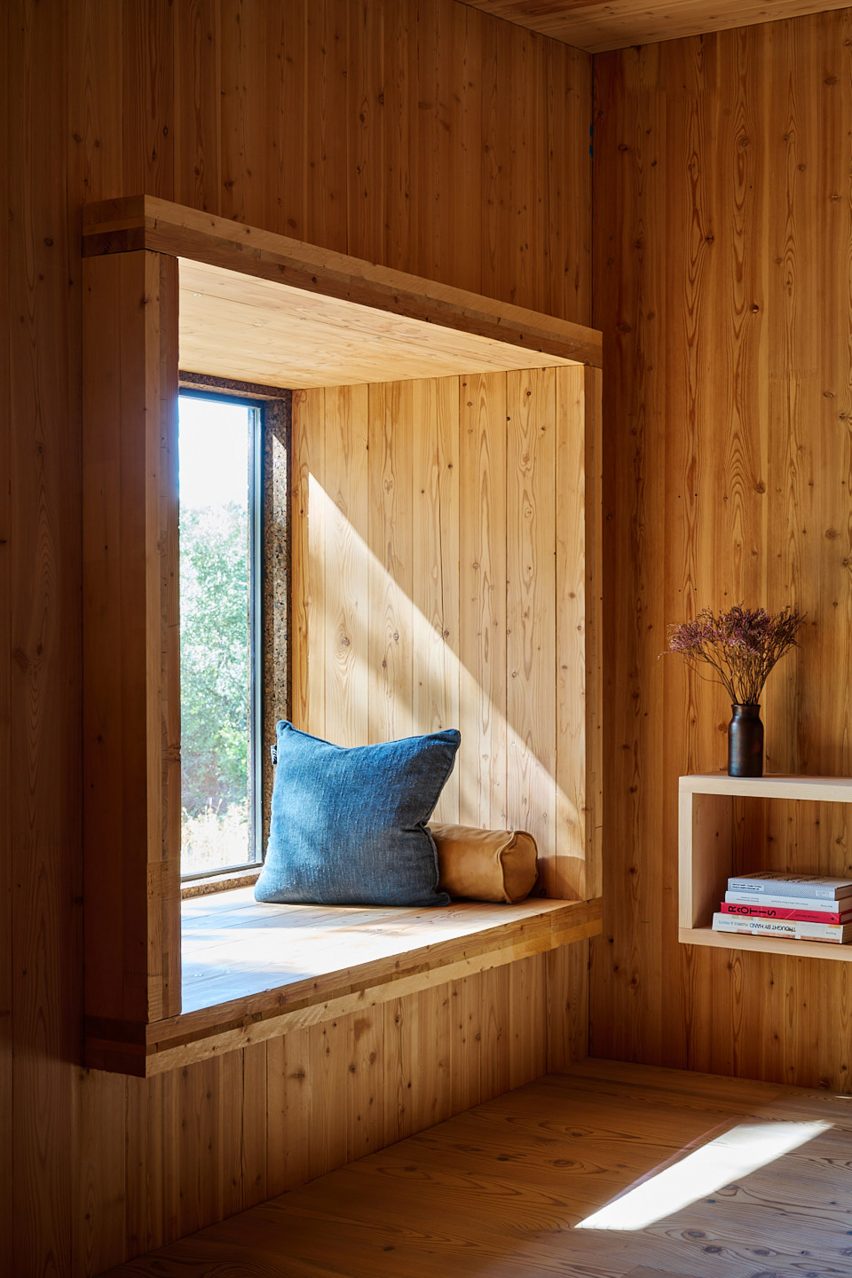
“When you are in an intimately scaled space and you are interacting with materials by touching, holding, pulling, and pushing them there are numerous opportunities to appreciate subtle material qualities like the delicate striations, slight iridescence and rich color variations on the surface of the cork or the pleasing texture of a tree’s growth rings on wood floor or handrail.”
In addition to smell and texture, the studio said the house interacts with light and shadow more naturally, referencing another layer of biophilic design.
“The intentional restraint with artificial lighting too means that we are much more in tune with the weather and qualities of light outside than we typically would be,” Esparza said.
“If it’s bright and sunny outside, it is bright inside, if it’s cloudy, the light is lower and more subdued, at sunset, the light inside takes on reddish, orange hues and long shadows stretch across the living room.”
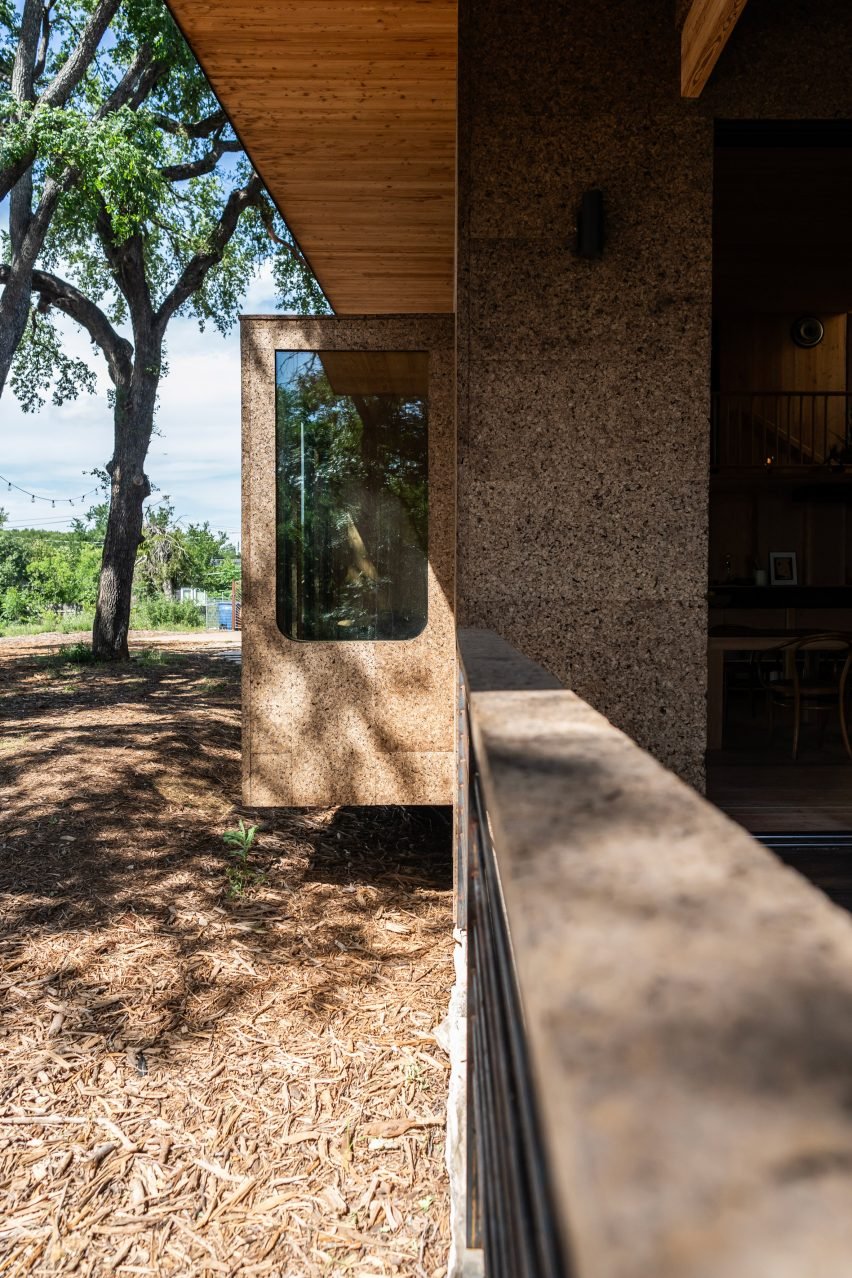
After working with the plant-based palette, Esparza launched Cross Cabin Build + Supply to advocate for and distribute low-carbon, healthy, bio-based building materials in Texas and across the southern US.
Other projects that prioritized plant-based materials include an apartment block in Madrid by Spanish architects Teo Nuñez and Almudena Ribot and a farm house in Navajeda, Spain by Guera Arquitectura Cooperativa both with a similar cross-laminated timber structure and cork cladding.
The photography is by Daniel Cavazos and Casey Woods.
Project credits:
Architect and builder: Moontower Design Build (Project Team: Greg Esparza, Frank Farkash, Hanna Johns, Leland Crosby, Jessica Cain, Jessica Painter)
Structural engineer: Apex Engineers (Matthew Umberger)
Landscape: Casey Boyter Gardens
Materials supplier/consultant: Cross Cabin Supply
Cork: Amorim Cork Insulation
